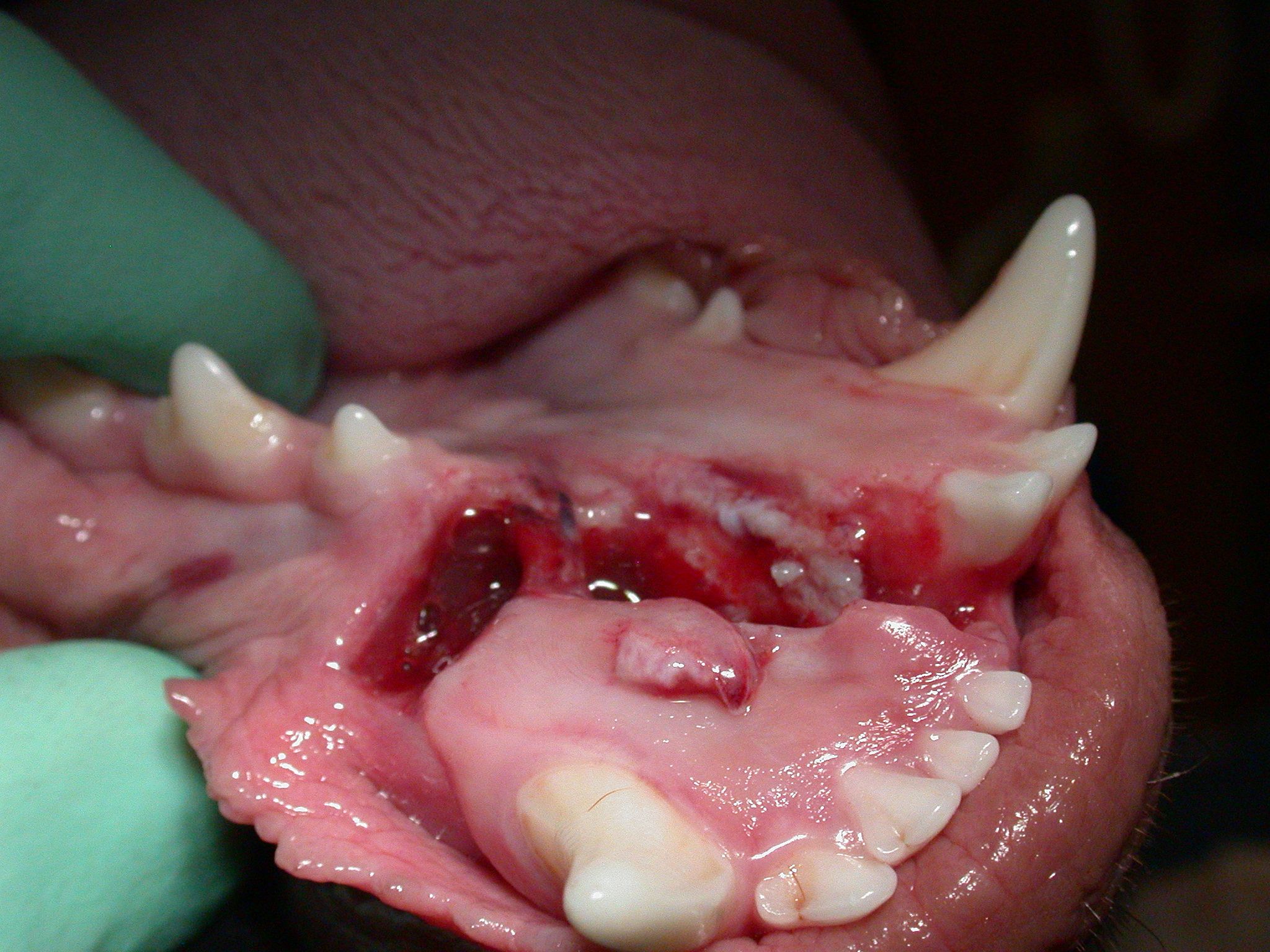
Dog & Cat Jaw fractures in Bozeman, MT
Fractures of the upper and lower jaws are fairly common. Trauma is commonly involved, but dental disease can play a role as well. Periodontal disease around certain teeth in the lower jaw can weaken the bone dramatically, allowing the bone to fracture more easily. Veterinary dentists receive extensive training in treating facial fractures and we are well equipped to handle a variety of traumatic injuries utilizing techniques appropriate for each individual patient.
When a fracture occurs, multiple options exist for treatment. Many fractures of the upper and lower jaws are amenable to treatment with an intra-oral splint fabricated with wire and acrylic. The wire is placed around the teeth (not in the bone) and then strengthened with the addition of a cold-cure acrylic material. The splint is both strong and light. It also allows for normal eating during healing, avoids the trauma of placing wires and screws into the bone, and is superior for maintaining the normal relationship between the jaw bones during healing. In other words, the jaws stay lined up correctly during healing. In most cases, the splint is removed in 4 weeks.
Case #1: Severe periodontal disease has weakened the lower jaw bone.
In this patient, the jaw has been dramatically weakened from dental disease, making jaw fracture much more likely.
 The areas of damaged and missing bone (arrows) due to dental disease have weakened the lower jaw. Normal bone levels are indicated by the solid white line.
The areas of damaged and missing bone (arrows) due to dental disease have weakened the lower jaw. Normal bone levels are indicated by the solid white line. Fractured right lower jaw from playing tug of war with a larger dog.
Fractured right lower jaw from playing tug of war with a larger dog. After placement of the wire and acrylic splint. The patient is able to eat during healing and the teeth are lined up normally.
After placement of the wire and acrylic splint. The patient is able to eat during healing and the teeth are lined up normally.
Case #2: Lower jaw fracture repaired with a titanium bone plate.
In some fractures, plates and screws are the preferred method of treatment. The titanium plates are very light and are well tolerated by the patients.
Before and After Fracture Repair


